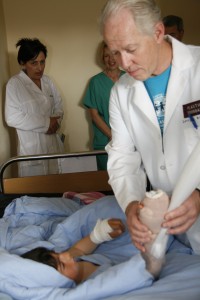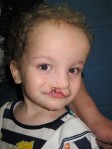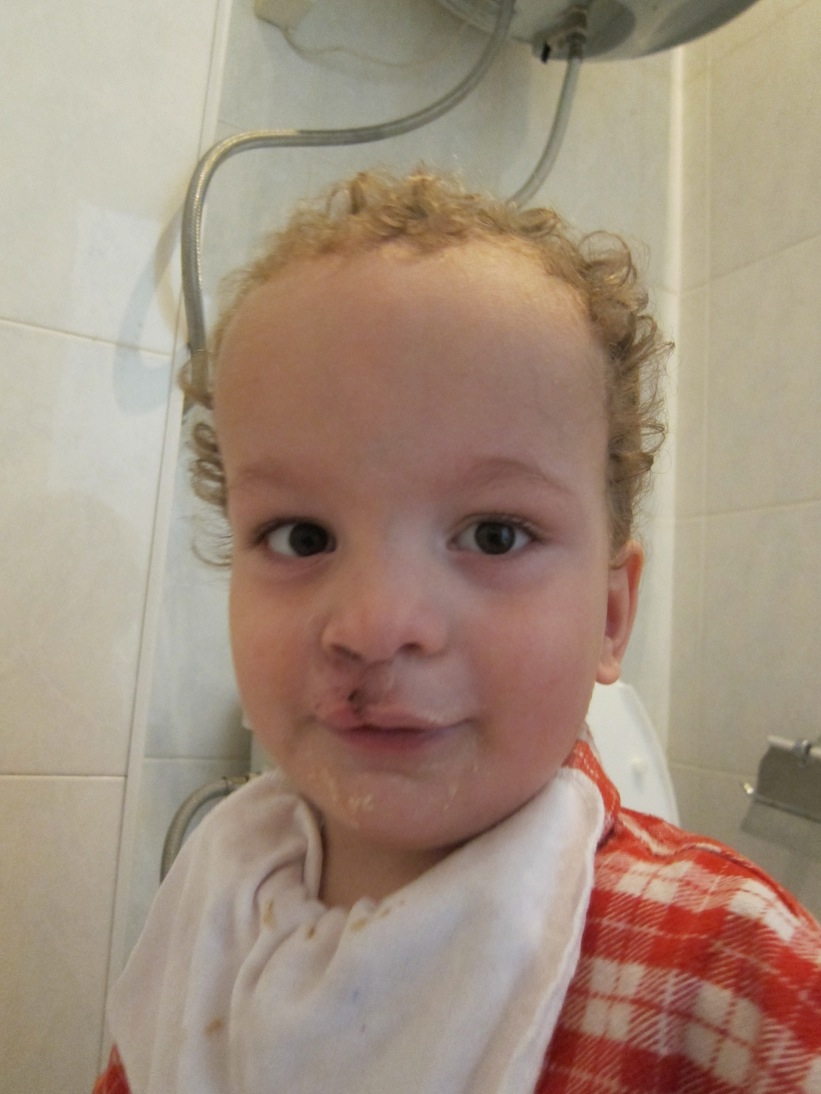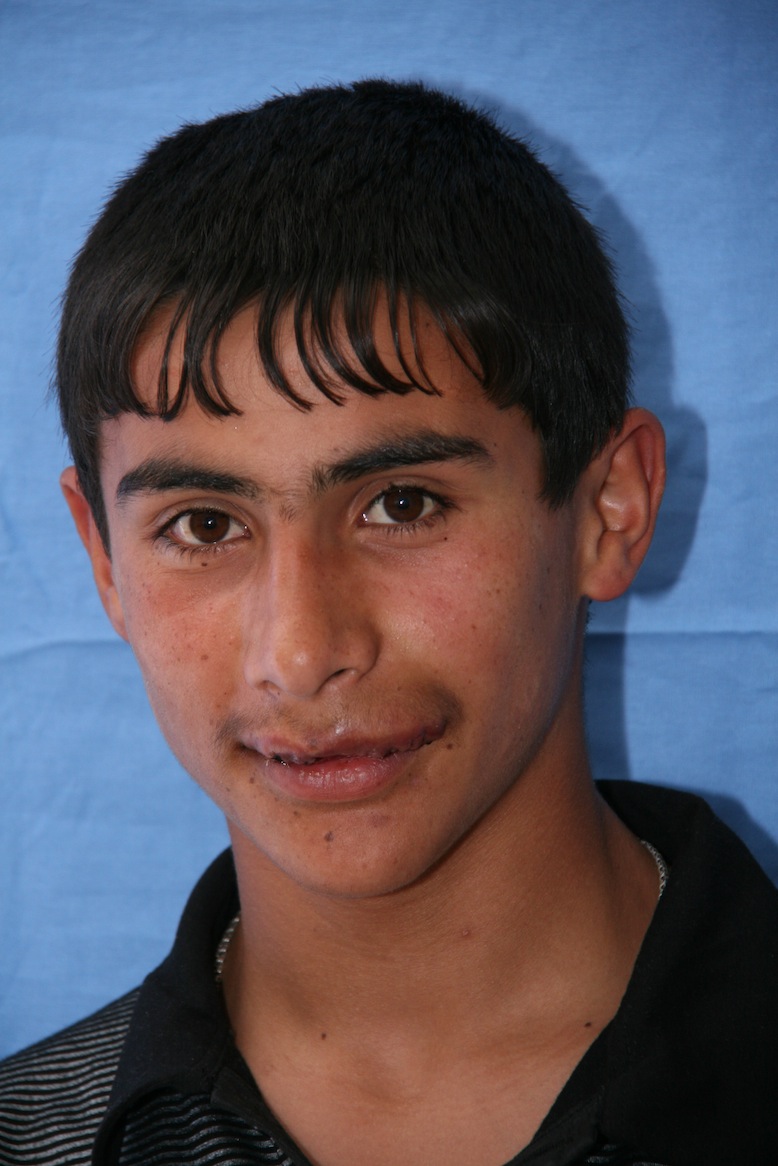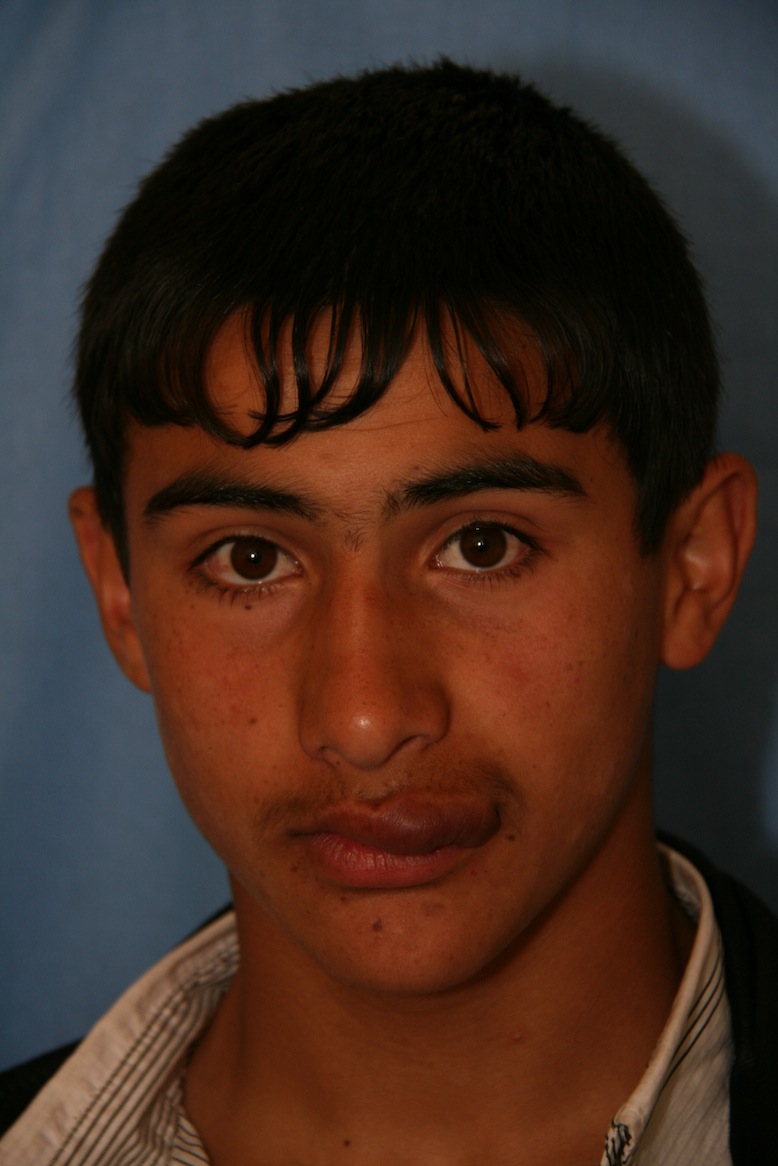I will never forget several of the children and infants I was privileged to care for in Armenia. Many were from the orphanages. Despite the hub-bub of activity and cacophony of background noise including languages foreign to their ear they seem delighted to have stimulation to the otherwise presumably sterile existence in the orphanage they know as home. One 6-month-old baby, Narek Mkrtchian, with a cleft lip was set aside in her plastic baby carrier against the wall. She did not cry but lay still for the moment. Every few minutes she would kick her legs rhythmically to set the carrier rocking for several seconds. Her understated smile seemed to indicate satisfaction as if she was rocked purposefully to soothe her. Her self-surrogate’s actions somehow soothed her loneliness.
Another 2 year old child with a pleasant demeanor was a charmer to all; Blond curly hair, wide cleft lip which became enormous with his frequent smile. His large forehead was from stable hydrocephalus and he was actively engaged in all activities. He reminded me of my nephew when he was young. Though both were too young to understand the significance of their surgeries at the moment, both following their surgeries did not complain of pain. On the contrary, they smiled at us with normal lips for the first time in their lives on morning rounds following their surgeries which must have caused discomfort.
Arzuman Ghazaryan,a 14 year old boy, with an almost identical brother except for his largevascular benign tumor of his upper lip, a lymphangioma which distorted his upper lip making it huge, unsightly and purplish. He was brought in to the Operating in clear view of another patient undergoing surgery of her head and neck by our team. Instead of showing distress, he grinned knowing that whatever the physical cost of undergoing surgery he had a shot of being normal again. The surgery only took about 45 minutes to correct the deformity that haunted him lifelong. I spied him looking in a mirror with a satisfied look that evening on rounds. When he spotted me he smiled and gave me the thumbs up sign and the first look of confidence he has probably experienced and just in time for the tumultuous adolescence period ahead.
I feel so privileged to have played intersected in a meaningful way in their difficult lives and the chance to train qualified surgeons who will now perform this surgery after I have returned home.
Larry Nichter, MD

